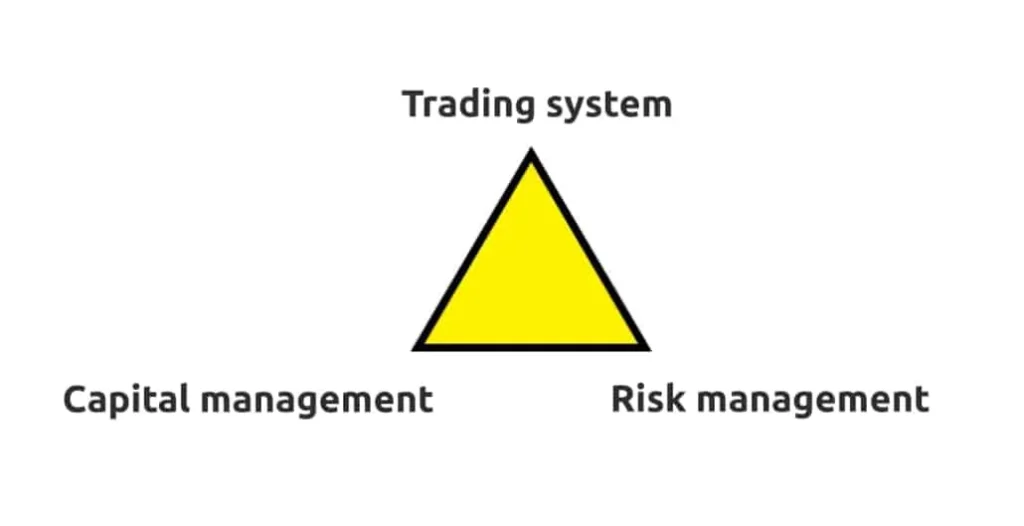RISK AND CAPITAL MANAGEMENT IN TRADING

Risk and Capital Management in Trading
Trading in financial markets involves a certain level of risk, and it is crucial for traders to have a solid risk and capital management strategy in place. Effective risk and capital management can help traders protect their investments and maximize their profits. In this article, we will discuss some important principles of risk and capital management in trading.
Diversification
Diversification is a key principle in risk management. By diversifying their portfolio, traders can reduce the impact of any single trade or investment on their overall performance. This can be achieved by investing in different asset classes, such as stocks, bonds, commodities, and currencies, as well as different sectors and regions. Diversification helps traders spread their risk and minimize the potential losses from any individual trade.
Position Sizing
Another important aspect of risk and capital management is position sizing. Traders should carefully determine the size of each position based on their risk tolerance and the potential reward of the trade. By properly sizing their positions, traders can limit the amount of capital at risk in any single trade. This can help preserve their capital and prevent significant losses in case the trade goes against them.
Stop Loss Orders
Stop loss orders are an essential tool in risk management. A stop loss order is a predetermined price at which a trader will exit a trade to limit their losses. It is important for traders to set stop loss orders at levels that are reasonable and align with their risk tolerance. Stop loss orders can help traders protect their capital by automatically closing a position if the market moves against them beyond a certain point.
Risk-Reward Ratio
The risk-reward ratio is a critical concept in risk and capital management. It refers to the potential profit compared to the potential loss of a trade. Traders should aim for a favorable risk-reward ratio, where the potential profit outweighs the potential loss. By carefully assessing the risk-reward ratio of each trade, traders can make informed decisions and focus on trades that offer a higher probability of success.
Constant Monitoring and Evaluation
Lastly, traders should constantly monitor and evaluate their trades and overall portfolio. Regularly reviewing the performance of trades can help identify any flaws in the risk and capital management strategy. Traders should be willing to adjust their approach if necessary and continuously learn from both successful and unsuccessful trades.
Strategies for Effective Risk and Capital Management:
Define Your Risk Tolerance:
- Assess your risk tolerance before entering the market. Be honest about how much risk you are comfortable with, considering both financial and emotional aspects.
Utilize Stop-Loss Orders:
- Set clear stop-loss orders for every trade. Determine the level at which you're willing to accept a loss and let the order execute automatically.
Diversify Your Portfolio:
- Spread your investments across different assets or asset classes. Diversification helps mitigate the impact of poor performance in a single investment.
Adopt the 2% Rule:
- Never risk more than 2% of your trading capital on a single trade. This rule ensures that losses on individual trades don't deplete your entire capital.
Adjust Position Sizes:
- Regularly reassess and adjust your position sizes based on changes in your trading capital. This adaptability is crucial for capital preservation.
Regularly Review and Refine Your Strategy:
- Periodically evaluate your trading strategy. Identify what's working and what needs adjustment. Market conditions evolve, and your strategy should evolve with them.
Stay Informed:
- Keep abreast of market news and events that could impact your trades. Being well-informed helps you make more strategic and calculated decisions.
In conclusion, risk and capital management are essential components of successful trading. By diversifying their portfolio, properly sizing their positions, using stop loss orders, considering the risk-reward ratio, and constantly monitoring their trades, traders can protect their investments and increase their chances of success in financial markets the success of a trader is intricately tied to effective risk and capital management. By integrating these principles into your trading routine, you not only protect your capital but also enhance your ability to navigate the unpredictable waters of the financial markets. Remember, in trading, survival and longevity are often as crucial as profitability.
- Pingback: TRADING RISK MANAGEMENT - strategictraderpro.com
Leave a Reply
